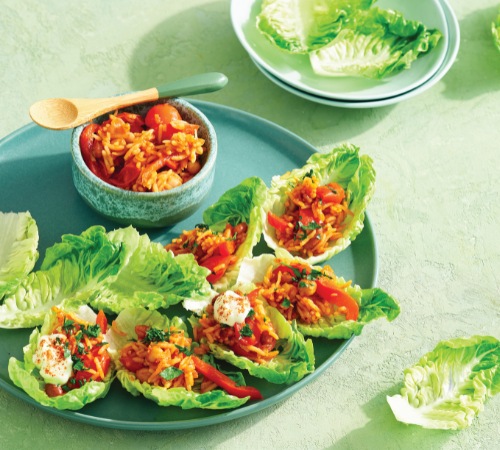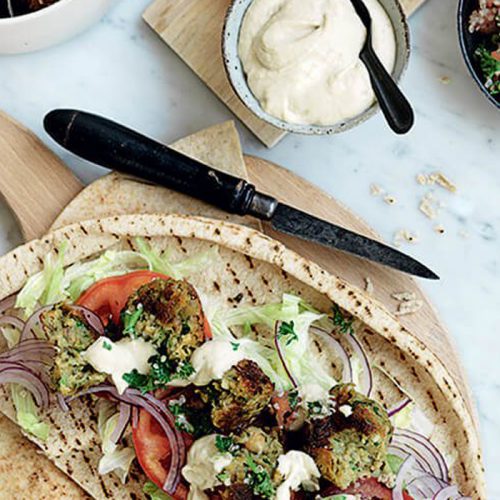
If you’re stuck at home or just looking to make your food money stretch a bit further, getting the right pantry staples can make all the difference. Healthy Food Guide looks at which budget-friendly pantry staples pack the biggest nutrition punch, to help you and your family weather any storm.
Eggs
Brain boost
As well as containing a wide range of vitamins and minerals, eggs are among the richest sources of choline, a nutrient that makes acetylcholine, a neurotransmitter in the brain involved in nerve and brain functioning and memory. Many of the B vitamins found in eggs are important for mental wellbeing.
Eye health
Egg yolks contain lutein and zeaxanthin, antioxidants that are critical for good vision.
Vitamin D
Eggs are among the few food sources of vitamin D, needed for bones, teeth, muscles and a strong immune system.
Satisfying
Several studies have shown people feel fuller for longer when they eat eggs for breakfast.
2 boiled eggs contribute the following to our daily needs:
Vitamin A 15%
Folate 16%
Vitamin B5 21%
Vitamin B3 24%
Protein 29%
Phosphorus 30%
Vitamin B2 34%
Biotin 34%
Iodine 35%
Selenium 50%
Vitamin D 65%
Vitamin B12 30%
Milk
Liquid assets
Milk is a really versatile and budget-friendly way to pack a variety of nutrients into your diet, including B vitamins, calcium, phosphorus and iodine.
Healthy bones and teeth
Dairy products are especially important for bones – research shows higher intakes support healthy bone development and help maintain density and strength. Milk is also good for teeth, thanks to its combo of calcium and phosphorus.
Thyroid friendly
Milk contains iodine, too, which is useful as 15% of women in the UK have extremely low intakes.
Veggie bonus
It’s also an important source of vitamin B12 for vegetarian diets (most natural sources of B12 are animal-based).
200ml serving trim milk contributes the following to our daily needs:
Potassium 15%
Vitamin B5 23%
Phosphorus 27%
Calcium 30%
Vitamin B2 34%
Iron 40%
Vitamin B12 72%
Canned fish
Minimum fuss
Canned fish needs no preparation – simply open the can – and there’s hardly any waste, plus it has a long shelf life so, unlike fresh fish, there’s no pressure to use it by a certain date. Check fish is from a sustainable source and look at salt values as some canned fish can be high in salt, especially if it’s smoked, canned in brine or in a sauce.
Two weekly portions
That’s how much health experts recommend we eat, and they specify that one of these should be oil-rich to provide beneficial omega-3 essential fatty acids. Canned fish is an inexpensive and fuss-free way to achieve this. All varieties tend to be a cheaper way to enjoy good-quality protein – more economical than chicken, ham or beef for sandwiches, jacket potato toppings and salads.
Various nutrients
While canned fish contains stacks of nutrients, ranging from B vitamins and selenium to phosphorus and zinc, exactly which depends on the variety of fish. Oily varieties – such as canned salmon, pilchards, sardines, mackerel, kippers and slid – are especially rich in heart and brain-friendly omega-3 fats, and are among the richest food sources of vitamin D, important for healthy bones.
Include the bones
The soft bones in canned sardines provide a calcium boost.
145g can tuna (100g when drained) contributes the following to our daily needs:
Vitamin B6 22%
Vitamin D 22%
Phosphorus 24%
Protein 50%
Vitamin B3 103%
Vitamin B12 120%
Selenium 125%
Almonds
Power players
Almonds may not seem a budget buy at first glance, but these popular nuts are nutrient powerhouses that give you incredibly good nutritional value for your money.
Heart friendly
As well as providing a wide range of vitamins and minerals, almonds are rich in monounsaturated fats – this perhaps helps to explain why many studies link them to better heart health and lower LDL (bad) cholesterol. There’s also evidence that, rather than encouraging weight gain, almonds may help us better regulate our weight and reduce belly fat, possibly because they help fill us up and replace other snacks in our diet that are higher in calories and lower in nutrients.
30g serving almonds contributes the following to our daily needs:
Phosphorus 21%
Magnesium 22%
Vitamin B2 24%
Copper 31%
Manganese 33%
Biotin 38%
Vitamin E 63%
Frozen, canned and dried
Plenty of variety
When you think of frozen and canned veg you probably imagine peas, carrots and sweetcorn. But you can now get broccoli, spinach, cauliflower, mushrooms, broad beans, green beans… The list is growing. Frozen and canned veg tend to be cheaper than fresh and involve no prep and a long shelf life, so there’s less waste.
Locked in nutrients
Freezing and canning processes lock in nutrients as veg and fruit are harvested at their prime and packaged quickly after picking. Nutrition-wise, they’re as good as fresh. Meanwhile, the drying process means fruits lose water so that all their nutrients become concentrated.
Different produce, different nutrients
Most vegetables include the essential vitamins and minerals needed for good health, including fibre, B vitamins such as folate, and vitamins A and C. Some also help to top up potassium, copper and manganese intakes – plus they provide naturally containing plant chemicals (phytochemicals), many of which have been linked to health. Green veg, for example, are rich in lutein and zeaxanthin, two antioxidants that protect against age-related macular degeneration, a disease that can result in poor vision.
Tomatoes are packed with an antioxidant called lycopene, higher intakes of which have been linked to a reduced risk of heart disease and certain cancers, such as prostate cancer. Better still, the body is able to absorb the lycopene from processed tomatoes – such as canned – more easily than it can from fresh. Many fruit and veg are rich in flavonoids, which have been linked to better heart health.
Eat a variety every day
This is the best way to benefit from all the different nutrients that fruits and vegetables contain – an 80g serving counts as one of your 5-a-day.
Potatoes
White potat0es
Spuds don’t come under the same category as other veg as they don’t count towards your 5-a-day. They’re often seen as providing little beyond starchy carbs, but they’re a good source of important nutrients, including folate, vitamins B1 and C, and potassium.
Sweet potatoes/kumara
These contain an even wider range of nutrients and are especially rich in beta-carotene, which the body uses to make vitamin A – a nutrient that’s vital for our immune system, vision and healthy skin. Keeping the skin on potatoes boosts their fibre content and helps to reduce food waste, so don’t bother peeling them unless you’re making something smooth such as mash.
Whole grains
Fibre providers
Wholewheat pasta, brown rice, wholemeal bread and bulgur wheat are fantastic budget buys that are loaded with nutrients. As the name suggests, wholegrain foods contain all three parts of the grain – the nutrient-rich germ, the energy-providing endosperm and the fibre-rich bran layer. When grains are refined (for example, white rice, white pasta or white bread), the outer bran layer and germ of the grain are stripped away, with the result that the grain loses much of its fibre and many of its nutrients. That’s why it’s important to choose wholegrain carbs over white ones.
Health bonus
As well as being rich in energy-giving starchy carbs and containing filling fibre, whole grains provide a wide range of vitamins, minerals and phytochemicals. It’s this package of nutrients that’s thought to be responsible for the many health benefits linked to good intakes of whole grains, which include a healthier heart, protection against some cancers and type 2 diabetes, and better control of body weight.
Advantages of soluble fibre
Oats are a particularly good choice of whole grain, as they are especially rich in a soluble fibre called beta-glucan, which helps reduce the absorption of cholesterol in the intestine. This means regularly eating oats can help to lower your total and LDL (bad) cholesterol levels. Soluble fibre also helps to control blood sugar levels, preventing dips that can leave us hungry and craving sweet foods for an energy boost.
Wholegrain oats provide many different vitamins and minerals. Plus they contain antioxidants called avenathramides, which may help to keep the arteries healthy.
Beans and pulses
Nutrient-dense
Pulses are perfect for replacing some or all of the red meat in dishes, which helps to reduce the cost as well as calories and fat. They’re especially good for including in vegetarian and vegan diets.
Canned or dried chickpeas, lentils and beans such as kidney, haricot, butter, black, cannellini, borlotti, flageolet, adzuki, pinto and black-eyed, are an inexpensive way to add a hunger-busting combo of protein and fibre to diets, as well as nutrients such as potassium, calcium, iron, phosphorus, manganese and B vitamins.
Soluble fibre
Pulses are particularly rich in this type of fibre, which is linked to reducing blood cholesterol and improving glycaemic control.
Prebiotics
Beans and pulses are a source of food for friendly bacteria in the gut.
5+-a-day
Around 80g (about 3tbsp) provides one of the recommended 5-a-day portions of fruit and veg, although they only count once no matter how many servings you eat – this is because pulses contain a spectrum of nutrients closer to those found in meat, chicken, fish and eggs than fruit and veg.
Dried pulses
These are usually cheaper than canned, but they do need soaking and longer cooking. Choose canned varieties in water without any added salt or sugar.
www.healthyfood.com










